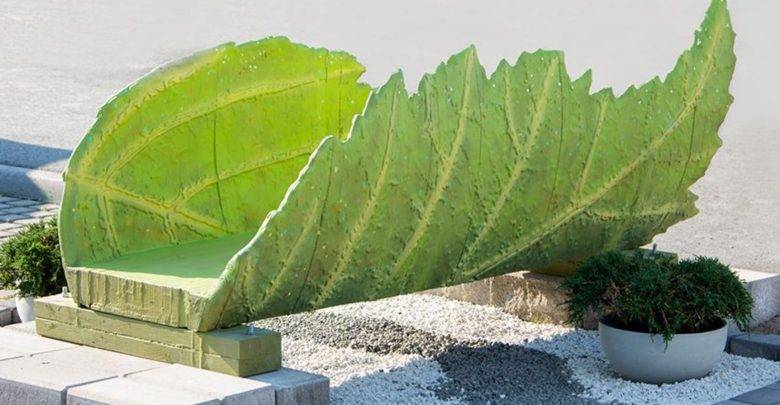Credit: www.3dprintingmedia.network
The 3D printed Leaf Bridge project was initiated at the end of 2017 when 3DStep, a 3D printing company from Ylöjärvi, Finland contacted UPM application manager Eve Saarikoski, the developer of the Formi 3D printable material. The bridge, made of a wood biocomposite material, was introduced to the public for the first time at Pori Housing Fair last summer.
The project brought together several of Finland’s leading technology players from the field of additive manufacturing: UPM Biocomposites, 3DStep Oy, Suunnittelukide Oy, Simons Element Oy, Tampere University of Applied Sciences, ROP Artist Group and Business Finland. Since autumn 2017, the project group has been investigating how large structures can be printed with wood-based materials.
The advantages of UPM Formi 3D over traditional 3D printing materials made it the clear choice as the material for the project. The fine cellulose fibers in the biocomposite material facilitate large scale printing. Low shrinkage, fast cooling and being self-supporting in the molten stage, enable large elements to be produced efficiently. The same fine cellulose fibers also make UPM Formi 3D the ideal material for small 3D prints, allowing fine details to be produced with even the smallest of nozzles. Additionally, its light color and matte wood-like texture mean that UPM Formi 3D is an excellent alternative to more coarse wood fiber-based materials as well as the less natural looking pure PLA filaments. PLA is a biodegradable and bioactive polyester derived from renewable resources.
Bioinspiration
Engineers and architects have often sought inspiration from nature’s own designs. Lightweight and strong, natural structures have an elegance that is seldom found in man-made designs. The honeycomb in a beehive, the cellular structure of a tree trunk or even the fine lattice veins of a leaf: all exhibit strength and lightness of form as well as an economy of material used.
The need to keep manufacturing costs low has resulted in traditional construction projects relying on more simple forms found in nature.
3D printing as a manufacturing method has the potential to produce elements which match the most sophisticated of designs found in nature and to do so in a cost-effective way. The creativity of the designer can be combined with the performance needs of the engineer. In Finland, the Kataja project has been set up to achieve this synthesis with a design called the Leaf Bridge.
Biocomposite brings benefits to 3D printing
“Finland has the potential to take the lead in large-scale 3D printing,” says Eve Saarikoski, Application Manager, UPM Biocomposites. “The level of expertise in bio-materials, advanced manufacturing technologies and design is already world class”.
The development of large-scale 3D printing in construction is over a decade old. The first 3D printed house was manufactured in China already in 2008. Since then, large-scale 3D printing has taken great strids, and promises more in the near future in both materials and process. Pekka Ketola, CEO, 3DStep Oy, believes that 3D printing will fundamentally alter the design and construction in the future. Speaking about the Kataja project, he says “Our vision is to bring a design paradigm shift where sustainable materials, such as UPM Formi 3D, transform the building of the future.”
In order to realize such an ambitious vision, technological advances in 3D printing machinery are also at the core of the Kataja project. Two different types of 3D printers suitable for printing large components have been developed at Tampere University of Applied Sciences. TAMK’s Principal Lecturer, Mika Ijas explains “One of the printers is capable of printing components up to 500 vmm wide. Another printer developed by the University utilizes a ABB welding robot, which when incorporated with the printer head, has a print area of approximately 2 square meters.”
“Visitors were intrigued by the Leaf Bridge, although they were hesitant to walk on it, especially on the first days. But it was made to be strong; the bridge was printed hollow, weighs 93 kilograms and can support around 500–1000 kilograms of weight,” says Eve Saarikoski.
In addition to being able to support great weight, the material was also designed to withstand challenging weather conditions. “The material imitates the properties of wood, and can be processed like wood materials.”
According to Saarikoski, housing and construction fairs are ideal events to showcase the material, as potential customers for UPM Formi 3D are primarily in the construction and furniture industries.
Field of the future
“We had a wonderful group of experts from various fields working on the project. Their expertise, willingness to experiment and forward-thinking attitude made this possible. The Leaf Bridge would not be here without that co-operation, and especially not this quickly. The success behind this project was co-creation together with a shared vision and goal.,” says Pekka Ketola, CEO of 3DStep.
3D printing is still quite an unknown technique of manufacturing products in Finland but, according to Ketola, UPM Formi 3D will be able to cater for even private individuals’ printing needs in the near future.
“You could, for example, print a cradle for your baby. The material imitates wood and can be used to print a unique product with production costs comparable to mass-produced ones.”
Ketola describes UPM Formi 3D and 3D technology as a new and upcoming industry branch in Finland. “Material bends to many, and the material can be used in wall elements, three-dimensional advertisements, and interior decorations. The material is very versatile. It is up to 100 times faster to print than metal, for instance.”
The Leaf Bridge was printed with two separate printers. One was modified from a welding robot and the other was a 3D printer on an assembly line. They were both designed for this project, but they can also be utilized in the future. According to Ijas, In the project, teaching and ICT activities were able to combine, because students were involved in both equipment development and the printing process.


